Mealy Blue Sage, also known as Mealy Sage or Mealycup Sage, is a beloved perennial herb in Texas landscapes.
Known for its spikes of blue to lavender blooms, this hardy plant is an excellent choice for attracting pollinators and adding vibrant color to your garden throughout the growing season. Native to the prairies, meadows, and woodland edges of Texas, Mealy Blue Sage thrives in well-drained soils and is an important part of any pollinator-friendly landscape.
Quick Facts
• Common Names: Mealy Blue Sage, Mealy Sage, Mealycup Sage
• Latin Name: Salvia farinacea
• Family: Lamiaceae (Mint Family)
• Height: Typically up to 3 feet tall
• Bloom Time: Blooms off and on from spring through fall
• Light Requirements: Full sun
• Soil Type: Limestone-based, well-drained, dry soils
• Water Needs: Low; drought-tolerant once established
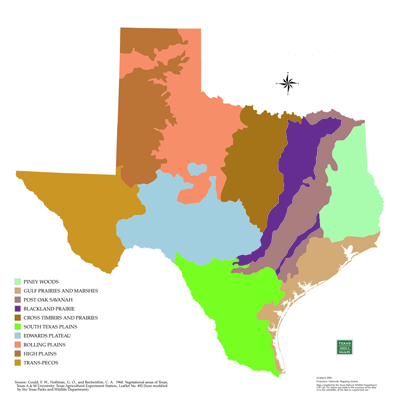
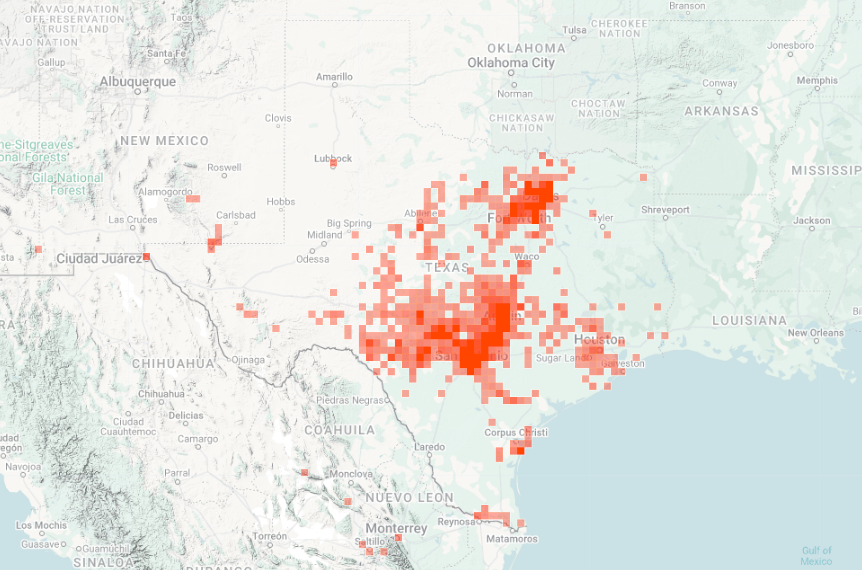
Image Sources: iNaturalist (Left) Texas Parks & Wildlife (Right)
Distribution – Where is Mealy Blue Sage Native?
Mealy Blue Sage is native to the prairies, meadows, pastures, and woodland edges across Texas with the bulk of its distribution following a line in Central Texas around San Antonio and Austin up to Forth Worth and Dallas.
It thrives in limestone soils and is especially common in dry, well-drained areas, adding vibrant color to natural landscapes and cultivated gardens.
This hardy plant is well-adapted to the Texas climate, from the edges of woodlands to open savannas and our prairies–which is why it seems concentrated around the Post Oak Savannah, Blackland Prairie, and finally, Edwards Plateau ecoregions here in Texas.
Benefits of Mealy Blue Sage
For Your Landscape
• Drought Tolerance: Mealy Blue Sage is incredibly drought-tolerant once established, making it an ideal choice for xeriscaping and low-water gardens. It thrives in thin, dry limestone soils and is an excellent option for rock gardens or areas with poor soil.
• Aesthetic Appeal: Its blue to lavender blooms create a stunning mass of color in garden beds, perennial borders, or wildflower meadows. When planted in groupings, it can provide a striking visual contrast against the green foliage of surrounding plants, adding depth and interest to any landscape.
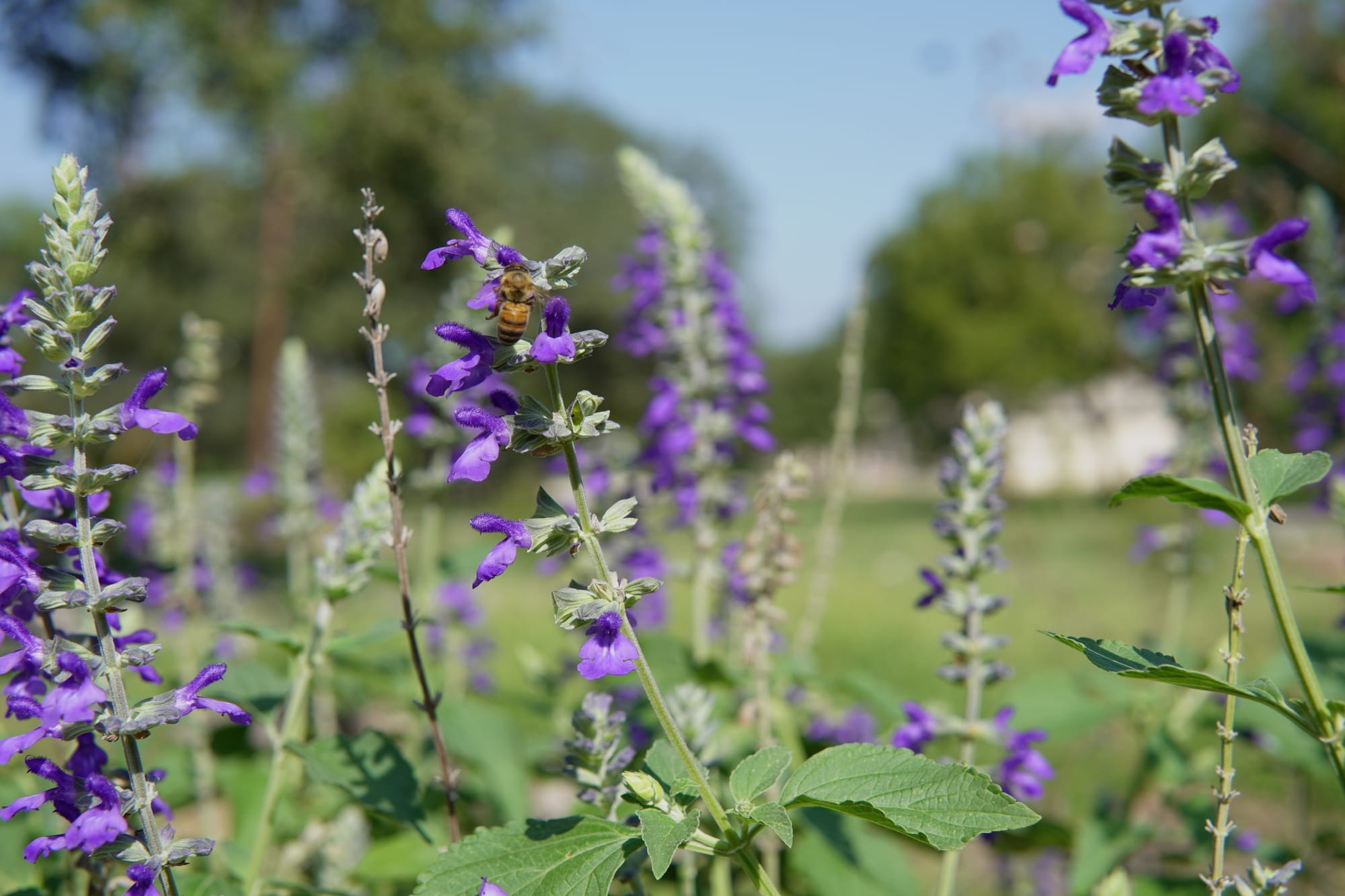
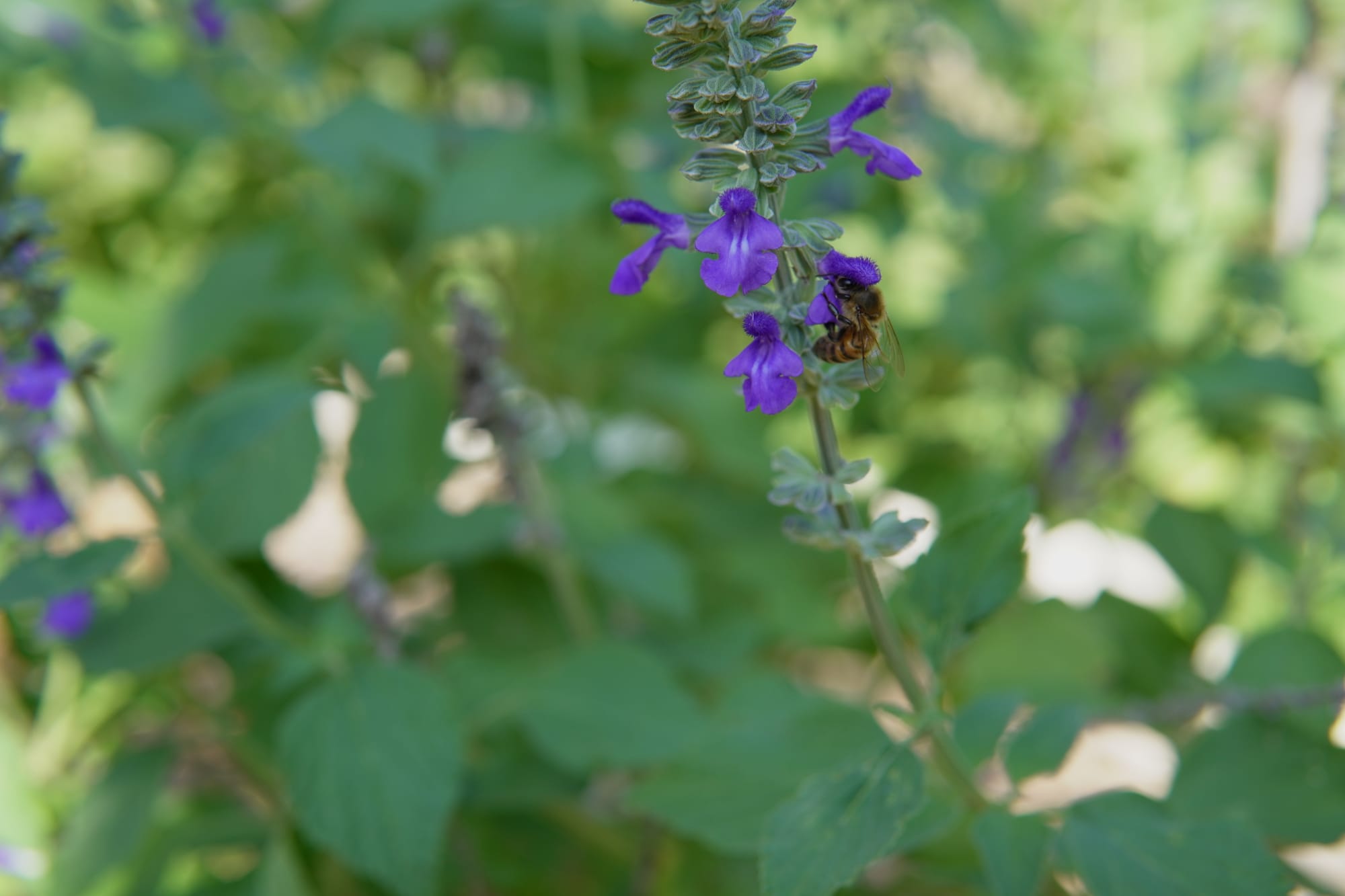
For Wildlife
• Pollinator Magnet: The nectar-rich blooms of Mealy Blue Sage are a favorite among hummingbirds, bees, and butterflies. It’s not uncommon to see this plant buzzing with activity while in bloom, making it a key player in supporting local pollinator populations.
• Deer Resistance: Mealy Blue Sage is generally deer-resistant, making it a good choice for gardens in areas where deer browsing is a concern.
Planting & Care
Location: Where is the Best Place to Plant Mealy Blue Sage?
Mealy Blue Sage performs best in full sun and well-drained, dry soils. It thrives in the limestone-based soils of Texas and will struggle in wet or poorly-drained conditions.
If you’re looking to plant it in a flower bed, a rock garden, or a wildflower meadow, spacing plants about 1 to 2 feet apart ensures they have room to grow while creating a beautiful mass of color. In drier soils, it can even tolerate some partial shade, but it will be at its best in full sun.
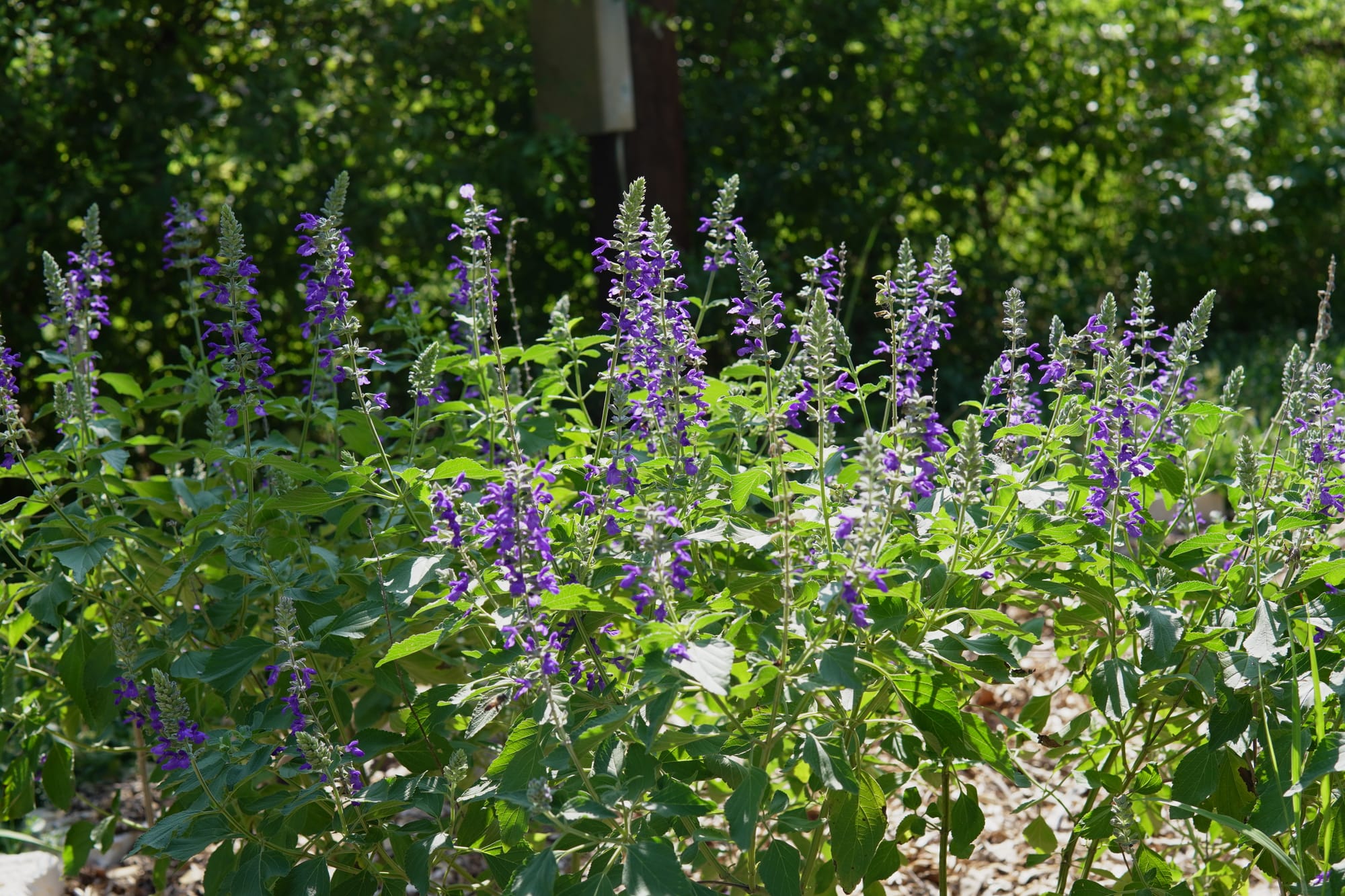
Care & Maintenance
Mealy Blue Sage is low-maintenance, but here are a few tips to keep it looking its best:
• Pruning: Cut back old flower stems when new basal foliage appears to keep the plant compact and lush. After an extended period of flowering, you may wish to prune it halfway back to encourage denser, more compact growth. Pruning may delay flowering for a few weeks, but it prevents the plant from becoming leggy and weak.
• Watering: Mealy Blue Sage requires minimal water once established. Overly wet soils will make the plant leggy and reduce its vigor, so be cautious not to overwater.
• Soil: The key to success with Mealy Blue Sage is well-drained, dry soils. Limestone soils are ideal, but it can also tolerate sandy or calcareous soils, provided they don’t retain too much moisture.
Companion Plants & Design Considerations
Mealy Blue Sage pairs well with other drought-tolerant Texas natives, such as:
• Pavonia (Pavonia lasiopetala)
• Zexmenia Daisy (Wedelia acapulcensis var. hispida)
• Blackfoot Daisy (Melampodium leucanthum)
• Texas Mountain Laurel (Sophora secundiflora)
• Lindheimer Muhly (Muhlenbergia lindheimeri)
Seasons: What to Expect
Mealy Blue Sage is a reliable bloomer throughout the warmer months, offering beauty and interest from spring through fall.
Spring: New growth begins with the return of warm weather, and blooms appear early in the season, setting the stage for months of color.
Summer: Mealy Blue Sage thrives in the heat of summer, blooming profusely with tall spikes of blue or lavender flowers that attract pollinators.
Fall: Blooms continue well into the fall, providing a late-season nectar source for pollinators and maintaining color in the garden as other plants begin to fade.
Winter: Mealy Blue Sage is deciduous and will die back to its basal foliage as winter approaches when temperatures drop. However, it remains hardy and will return the following spring, ready for another season of growth and bloom!
Propagation
There are several methods for propagating Mealy Blue Sage:
• Cuttings: Softwood cuttings taken in late spring, after the first flush of growth, are the best method for propagating Mealy Blue Sage. Simply take a 3-4 inch cutting, remove the lower leaves, and place it in well-drained soil or under mist for rooting. While more detailed information is limited, softwood cuttings generally root well with proper care.
• Seeds: Mealy Blue Sage can also be grown from seed. Direct sow the seeds in spring or fall after clearing the planting area of any non-native or competing species.
*Seeds can be purchased from native plant seed sources such as Seedsource.com.
Medicinal/Edible Uses
While Mealy Blue Sage is prized for its ornamental and wildlife value, it is not known for any significant medicinal or edible uses. Like many members of the Salvia family, its leaves have a pleasant, aromatic scent, but its primary role in the landscape is as a hardy, attractive, and pollinator-friendly plant.
Sources
Along with my own experience working with Mealy Blue Sage in Texas landscapes here are the books and resources I consulted in producing this page:
📚 Books:
• Native Texas Gardens: Maximum Beauty Minimum Upkeep by Sally and Andy Wasowski
• Native Texas Plants: Landscaping Region by Region by Sally and Andy Wasowski
• Wildflowers of the Texas Hill Country by Marshall Enquist
🌐 Websites:
• Lady Bird Johnson Wildflower Center

